
Spruce Budworm
Gros Morne National Park
An outbreak of spruce budworm is occurring along the west coast of Newfoundland, including within Gros Morne National Park. This native forest insect feeds mainly on balsam fir and white spruce, and to a lesser extent on black spruce. This can lead to the death of trees after several consecutive years of severe defoliation and mature forests are generally harder hit than young ones.
Spruce budworm outbreaks are an important part of the natural forest cycle in Gros Morne National Park. Insect disturbance is responsible for opening up gaps in the canopy so new trees can start to grow. Maintaining an appropriate amount of natural disturbances creates a patchwork of young and old forest across the landscape, and this helps ensure that all wildlife species can meet their habitat needs.
- More about spruce budworm
- Spruce budworm life cycle
- Effects on trees
- Consultations and decision not to spray in the park
- What an outbreak means for the forest
- Budworm and your visit
- FAQs
More about spruce budworm
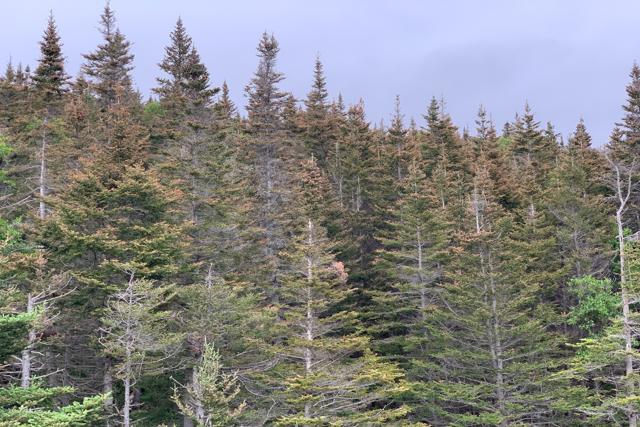
Spruce budworm is a species of moth that is native to the forests in eastern Canada. Every 30-40 years, populations of spruce budworm increase, resulting in an outbreak or epidemic. Spruce budworm larvae (caterpillars) feed on new growth at the tips of conifer branches in early summer, and if severe defoliation continues for 3-5 years this can lead to the death of the host tree. They are most damaging to spruces and especially to balsam fir. Outbreaks usually last about six or seven years in a given area and then subside, though the outbreak may persist as it moves across the landscape.
Evidence suggests that spruce budworm outbreaks have been synchronized between Newfoundland and eastern Quebec for centuries to millennia. There have been four well-documented outbreaks in Newfoundland over the last century. A severe spruce budworm outbreak in the 1970s may have been exacerbated by a combination of land management practices and favourable weather.
Since 2006, a spruce budworm outbreak has been moving eastward through Quebec and there is evidence of migration of spruce budworm moths from Quebec to western Newfoundland on prevailing winds. Monitoring shows that spruce budworm numbers have been increasing along much of the west coast of Newfoundland since 2018, including in Gros Morne National Park.
High numbers of spruce budworm were detected in some coastal areas of Gros Morne National Park in 2020. Defoliation became more widespread and noticeable in 2021, and by 2024 the outbreak was affecting lowland forests throughout much of the park.
Spruce budworm life cycle

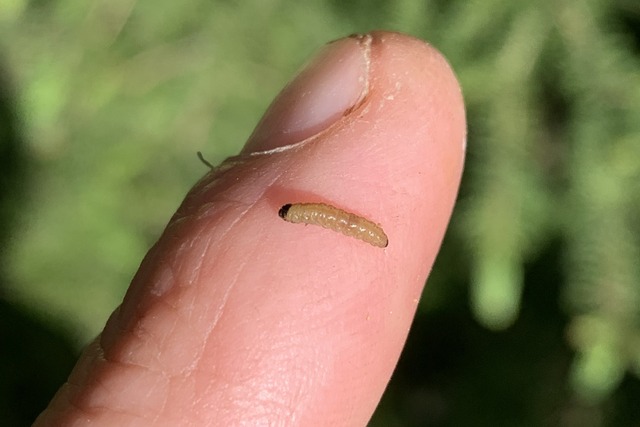
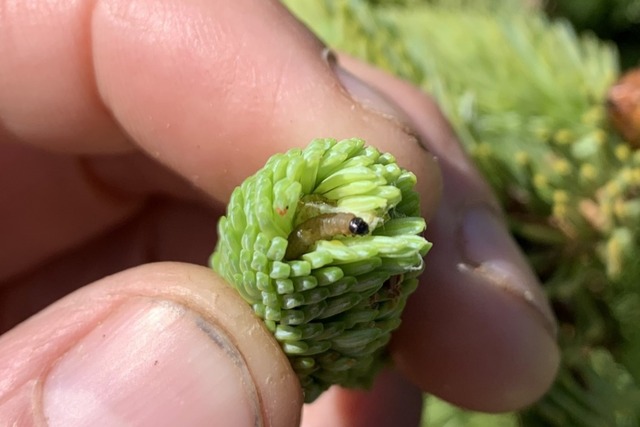

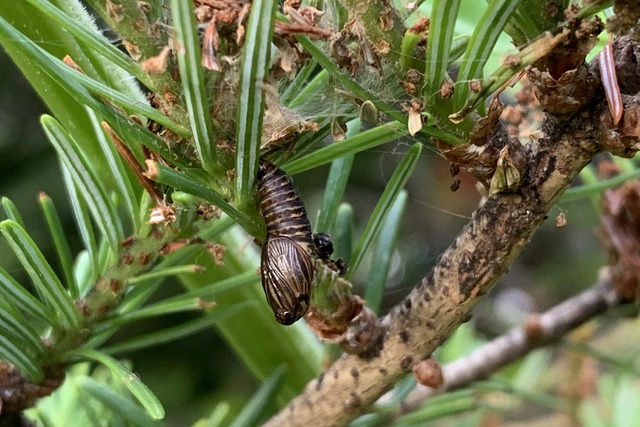
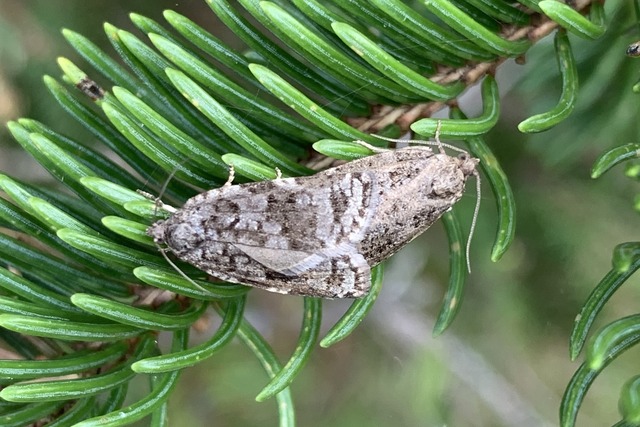
Effects on trees
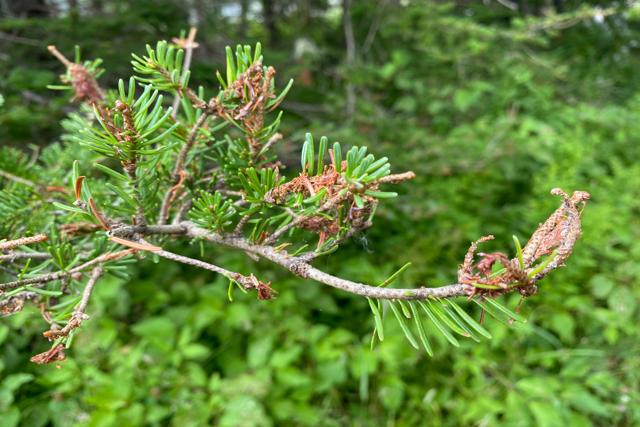
Feeding by spruce budworm larvae first becomes evident in June. Signs of an outbreak include the destruction of buds, abnormal spreading of new twigs, defoliation of current-year shoots and, if an affected branch is disturbed, the presence of large numbers of larvae hanging from strands of silk.
Defoliation begins at the top of the tree and current-year needles at the branch tips are partially or completely consumed. If large numbers of larvae are present, previous-year needles may also be affected.
Spruce budworm larvae also feed on conifer flowers and developing cones.
Budworm defoliation is generally more severe in stands having a high proportion of spruce or fir, and in older stands. Severely affected trees turn a rust colour due to the presence of dried-out needles held together by strands of silk spun by the larvae. By late summer, dead needles are dispersed by the wind and rain and defoliated stands take on a greyish appearance.
A single year of defoliation will slow growth but usually has little lasting impact on a tree. However, repeated defoliation over a period of 3-5 years often leads to the death of the host tree.
Consultations and decision not to spray in the park
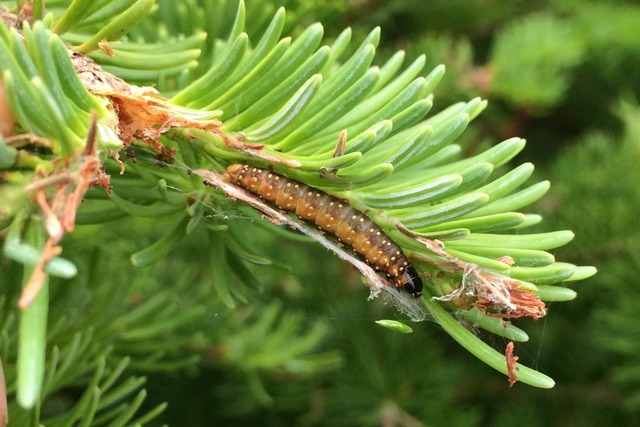
Since 2020, the Government of Newfoundland and Labrador has been conducting a spray program as part of an Early Intervention Budworm Control Program. The province asked Parks Canada to allow them to include Gros Morne National Park in their control program from 2021 onwards because of concern that the national park could act as a source of spruce budworm that spreads to neighbouring lands.
In response to the request, Parks Canada carried out a detailed review of relevant scientific evidence, policy and legislation to inform its decision. This assessment was peer-reviewed by 14 experts in forest ecology and spruce budworm. In addition, the Agency conducted public consultations. As a result of the review and consultation processes, Parks Canada decided that Gros Morne National Park would not be included in the spray program. This decision was based on a variety of considerations, including the potential impact that prevention of a spruce budworm outbreak within the national park would have on the ecological integrity of its forest ecosystem, the advanced stage of the developing outbreak in the park, which may have limited the potential for success, and the results of the public consultations. There was also some evidence suggesting that the budworm control program could be successful even if the park was not included, and there was also concern that intervention now could lead to a more severe outbreak in the future. However, Parks Canada has continued to support the Canadian Forest Service and the Government of Newfoundland and Labrador on monitoring and research so that we can understand the outbreak and its effect on the forest ecosystem.
The feedback received during the public consultation process was compiled into a What We Heard Report which can be found here:
What an outbreak means for the forest
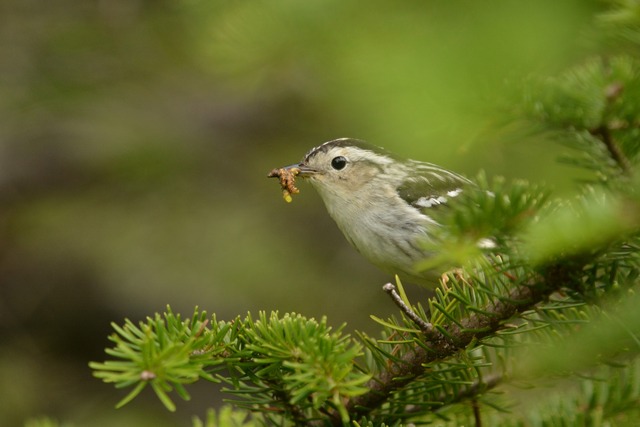
As trees die because of defoliation by spruce budworm, they will be replaced by young trees. This will lead to the development of diverse young stands and mixed-age stands that contribute to diversity in the landscape and to the overall health of the forest.
Unlike a wildfire, budworm do not have a strong impact on plants growing in the forest understory. Rather, the increase in sunlight reaching the forest floor, combined with a dose of fertiliser from the budworm’s droppings, stimulates vigorous growth of new vegetation. Thus, within just a few years severely affected stands will develop a lush green growth of pioneering plants and young, regenerating trees. Among other things, this will lead to an increase in fruit production, benefitting many species of animals.
While trees will die because of the outbreak, other forest species will benefit. Budworm caterpillars mature just as songbirds are feeding their young, and some bird species have moved into the area to take advantage of the increased food supply, while many of the species already present are also taking advantage of the bonanza of nutritious caterpillars. Salmon and trout also benefit from the presence of additional insects for food.
Many insects and fungi will occupy and feed on the dead trees, while woodpeckers will enjoy a bonanza of bark beetles and wood boring beetles. Some birds and mammals will use cavities in the snags as roosting, denning, or nesting sites.
Budworm and your visit
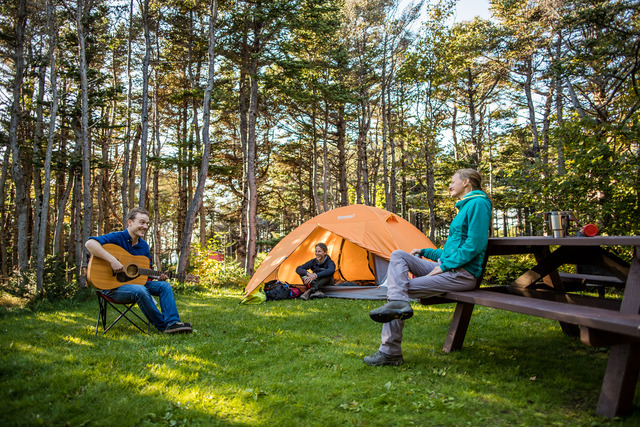
If you’re visiting the park from June to mid-July, you may see budworm caterpillars hanging from the trees by their silk threads. You might also notice or even hear their droppings falling on your tent. While this doesn’t present a health risk, you may find it unappealing. In that case, we suggest choosing an open trail such as the Tablelands trail, Coastal trail, or Western Brook Pond trail. You may also want to avoid setting your tent under overhanging trees. If you’re around in July, you won’t see the caterpillars anymore, but may notice large numbers of budworm moths doing their mating dances around the outer branches of spruce and fir trees. The moths are harmless and are easily avoided by stepping back from the conifer foliage. Most of the moths have laid their eggs by early August and die soon after, so you are unlikely to encounter this species in late summer and fall.
Related links
- Date modified :